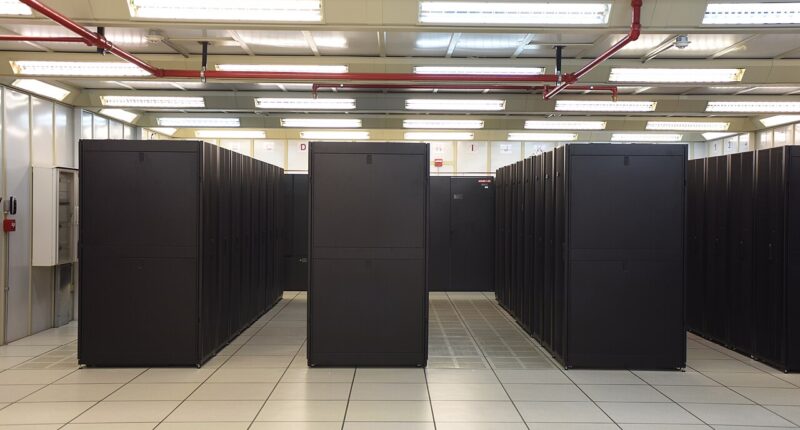Artificial intelligence’s computational requirements are expanding at more than double the rate of Moore’s law, driving towards 100 gigawatts of new electricity demand in the United States by 2030, according to research from Bain & Company that warns of an $800 billion annual funding gap.
Meeting global AI compute demands projected to reach 200 gigawatts by 2030 would require approximately $500 billion in capital investment each year for new data centres, representing a staggering sum that far exceeds anticipated government subsidies, according to Bain’s Technology Report 2025.
The growth trajectory marks a significant departure from decades of technological progress measured by Moore’s law, which holds that the number of transistors on an integrated circuit doubles approximately every two years. AI compute demand has sustained twice that rate over the past decade, with continued model evolution and enterprise adoption accelerating requirements.
US electricity grids face particular pressure from the surge, with 100 gigawatts representing substantial new load growth on infrastructure that has experienced relatively flat demand for the past 20 years. The challenge creates critical strategic decisions for technology executives allocating capital and managing investments.
Bain’s analysis of sustainable capital expenditure to revenue ratios for cloud service providers indicates the $500 billion annual requirement corresponds to $2 trillion in yearly revenue. Even if companies shifted all on-premise IT budgets to cloud infrastructure and reinvested anticipated AI savings from sales, marketing, customer support and research activities estimated at approximately 20 per cent of those budgets, the funding would still fall $800 billion short of the revenue needed for full investment.
The shortfall emerges despite significant potential sources of capital. Redirecting enterprise IT spending and capturing productivity gains from AI deployment across core business functions cannot bridge the gap between available funding and infrastructure requirements.
Four critical factors could impede or accelerate growth trajectories, according to the research. Unaffordable economics present the primary challenge, whilst algorithmic improvements, technological breakthroughs and supply chain constraints represent additional variables affecting compute capacity expansion.
Algorithmic innovation offers potential relief through more efficient processing approaches. Recent examples including mixed-precision matrix computation improve training and inference efficiency, whilst techniques such as chain-of-thought prompting and large model distillation boost performance whilst lowering computational load. DeepSeek exemplifies recent advances pushing compute efficiency frontiers through algorithmic design, though significant infrastructure increases remain necessary to reach required capacity levels.
Technological breakthroughs could reshape the landscape entirely. Bain’s research suggests quantum computing capable of replacing generative AI training and inference workloads remains at least 10 to 15 years away. Near-term possibilities include specially designed training and inference application-specific integrated circuits offering greater efficiency than general-purpose graphics processing units, alongside new memory forms and advanced packaging improving power efficiency.
Supply chain shortages pose immediate constraints across four critical areas. Power supply represents the most challenging bottleneck, as bringing new generation, transmission and distribution capacity online in highly regulated industries typically requires four years or longer. Construction services, compute enablers including GPUs, and limited data centre equipment supplies including electrical switchgear and advanced cooling systems create additional capacity restrictions.
The compute efficiency comparison produces striking illustrations of AI’s demands. Applying Moore’s law progress rates to automotive engineering would theoretically yield vehicles travelling at 300,000 miles per hour, achieving two million miles per gallon whilst costing four cents, according to the analysis.
Revenue generation requirements present formidable challenges for private sector funding. Without innovations unlocking new economic value, general progress could slow substantially, potentially limiting the field to players in markets with adequate public funding support.
AI applications spanning drug discovery, autonomous vehicles and logistics optimisation demonstrate potential for spurring new business development and revolutionary technological advancement. Such large-scale shifts frequently unlock economic value that could help produce revenue needed for necessary capital expenditure, though success remains uncertain without breakthrough innovations.
The research forms part of Bain’s Technology Report 2025, authored by David Crawford, Michael Schallehn, Paul Renno, Peter Hanbury and Alessandro Cannarsi.











